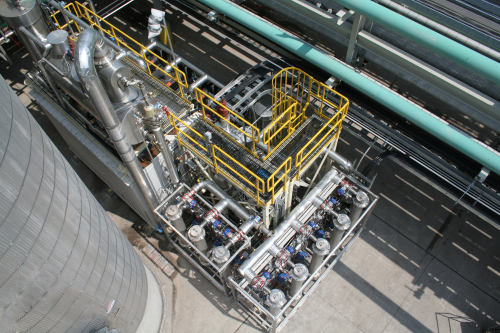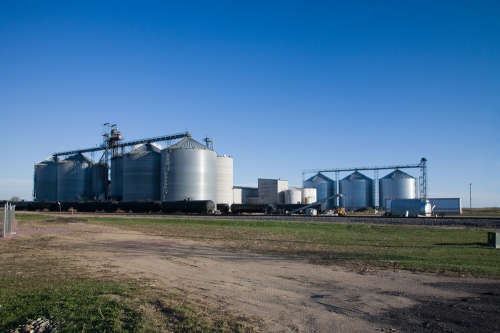

Reducing energy consumption
Although market factors determine the cost of raw materials and selling prices, processing technology can reduce the cost of producing fuel ethanol. The first saving comes from reducing energy consumption. A very large portion of the energy consumption comes from extracting water from the fermentation liquor product stream.
Developer and manufacturer of gas separation systems, Vaperma,has created Siftek™ membrane technology, an advanced membrane separation technology for Siftek™, has been designed to achieve energy savings of as much as 50% compared to the conventional distillation and molecular sieve dewatering solution.
The company recently tested the operation of a Siftek™ pilot plant at a facility of fuel ethanol manufacturer, Greenfield Ethanol Inc. The technology was tested for a period of approximately 4,000 hours for its use in the reprocessing of a 60%-90% ethanol/water blend into a 99% fuel-grade anhydrous ethanol. Vapermasaid that Siftek™ proved to be low maintenance throughout the test, and predicted that a replacement membrane cartridge would not to be needed until after three years of continuous operation.
Molecular sieve units
Molecular sieves combined with distillation have been proven effective to separate water and ethanol, however their use is energy intensive. Molecular sieve units (MSU) produce a purge stream which contains between 60% and 80% ethanol that is recirculated and reboiled in the distillation column.
MSUs include a water adsorption cycle during which an ethanol/water vapour mixture circulates across the molecular sieve bed. During this regeneration cycle, fresh ethanol is injected into the molecular sieve bed in a counter current flow with respect to the water adsorption cycle, the binary mixture is sent to the rectifier for reprocessing. The MSU accounts for only one third of the rectifying column total load. Also, molecular sieves are known for absorbing fuel oil over time.
Vaperma'sSiftek™ has been designed to increase throughput capacity and save energy. With the Vapermaprocess configuration, the MSU liquid phase purge stream is vaporised and dehydrated in the two-stage Siftek™ membrane cartridge configuration. The product's membrane dehydration system consumes less energy than many other MSU regeneration methods, and the membrane system enables significant unloading of the distillation column. By using the Siftek™ system Vapermasays a plant's overall fuel ethanol production can be increased by approximately 20%.
The membrane dehydrates the molecular sieve purge stream at a reduced cost, and the water-rich stream obtained is directed toward the front end of plant or is eliminated through the beer column. The membrane retentate end-product is fuel ethanol at 99+%. During plant maintenance shutdown, the skid-mounted Siftek™ system can be easily integrated to the facility.
How membrane technology works
When using quality membrane technology the ethanol producer can achieve increased throughput capacities and reduced energy consumption. Siftek™ polymeric membrane technology combines solvent and high temperature resistance with a strong proprietary hollow fibre that can be used in a variety of industrial applications. The membranes are vapour phase separation units that allow the preferred permeation of water over other vapour components in a gas mixture.
These membranes are made of a special blend of polymers selected for their specific morphological and chemical properties. The driving force for the separation phenomena is the ratio of the water partial pressure on the lumen and shell sides of the membrane. The high permeability of water across the membrane is due to its relatively high combined adsorption and diffusion rates.
The water/ethanol mixture is slightly pressurised into the bundle of hollow fibres. Dehydration of the water/ethanol vapour mixture occurs by selective permeation of water vapour across the active thin layer of each polymeric hollow fibre. Thousands of hollow fibres form a membrane cartridge bundle which is housed inside a stainless steel vessel.
The future of fuel ethanol
Cellulosic materials as feedstocks that will not compete with food supplies are considered to be the future of fuel ethanol. Conversion of cellulosic biomass to ethanol is challenging because the sugar concentration is far below that of corn or sugar cane. Processing cellulosic materials to ethanol also requires the removal of huge volumes of water from the fermentation liquor. Vapermasays its membrane solution is an attractive option for dewatering cellulosic ethanol as it is even more effective with an increase in the amount of water present in the feed.
Tried and tested
Vapermarecently tested the operation of a Siftek™ pilot plant at solvents and fuel ethanol manufacturer Greenfield Ethanol Inc's 25 million litres/year plant in Tiverton, Ontario, Canada. The test lasted 4,000 hours and involved the reprocessing of a 60%-90% ethanol/water blend into a 99% fuel-grade anhydrous ethanol. The first actual industrial field-trial enabled the production of approximately 200,000 litres of fuel-grade ethanol. As a result of that field trial, energy consumption was reduced by 40%.
Commenting on the impact of this new membrane separation technology, Greenfield Ethanol's CEO, Robert Gallant, said: “The unit in Tiverton used substantially less energy and therefore fewer greenhouse gases were created in the process – reducing the plant's CO2 footprint.”
Still under field testing, the Siftek™ membrane at Tiverton processes 1.5 m3/d of feed originating from the beer column. This is enough to encourage Vapermaand its partner Greenfield Ethanol to move on to a large scale test of a 7.5 million litres/year membrane soon.
According to Vaperma, the technology has proved maintenance free, with membrane cartridge replacement predicted not to be needed until after three years of continuous operation.






